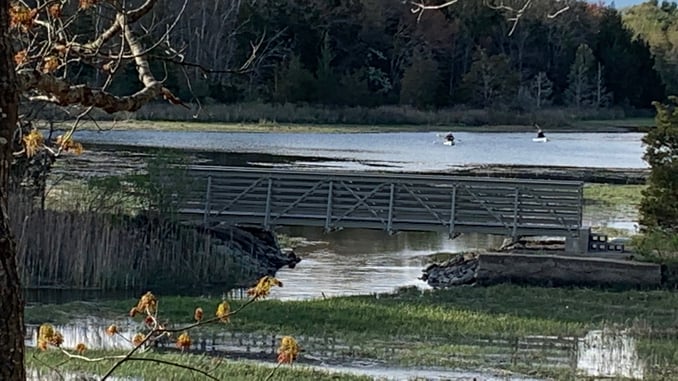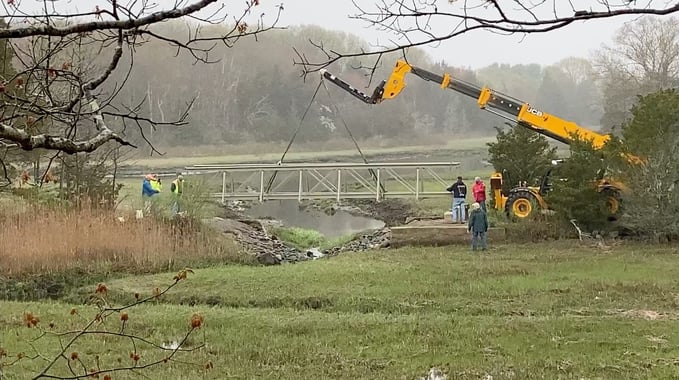
Coming into 2022, we want to spotlight more of our composite bridges. I want to share the stories of bridge-building, the impact of these bridges in their communities, and how we work with customers. This month we are looking at the Mill Cove Creek Bridge project in North Kingstown, Rhode Island.
When the Project Coordinator for the Land Conservancy of North Kingstown approached our group, we spoke with them about their needs and requirements for a pedestrian bridge. Their organization oversees historically significant land for both Native American and Colonial records—this bridge project aimed to reconnect multiple hiking trails to the village of Wickford and three surrounding neighborhoods.
The location for the bridge came with some challenges and concerns since it would be in a saltmarsh estuary ecosystem, with the saltwater running below the structure. Therefore, they would need a bridge to withstand this environment without continuous upkeep and repairs. Fiberglass Reinforced Polymer (FRP) was the ideal material due to its corrosion-resistant properties. The longevity of the material, coupled with the low maintenance aspect of fiberglass, also made it suitable for this highly corrosive environment.
The material used for the decking was also of concern since pine decking on the bridge might need frequent replacement in the saltmarsh environment. For that reason, we matched the customer with one of our FRP planks in place of wood. The FRP deck would offer all the same benefits as the components on the bridge while providing a stable, non-slick path for trail users to enjoy.

Our team started working on designs for a 35'x4' wide bridge. The process took three months, from design to shipment. Once the bridge arrived at the site, Covid-19 delayed the assembly. However, the assembly resumed in April of 2021 with modified instructions for smaller groups of building teams to work on the structure while accommodating Covid protocols.
Fifteen volunteers had the structure fully assembled in two and a half hours, right beside its final resting location. Then, a crane lifted the structure onto its foundations, the team tightened all the bolts, and the bridge was ready to be used. The Project Coordinator commented on the assembly process, saying they were utterly shocked at the ease of assemble and how quickly everything came together for their group.
A few months after the bridge installation, I reached out to the Project Coordinator to see how the bridge was performing. They let me know that the bridge looks great! Community members loved the structure and gave it plenty of daily use. Even the local wildlife took advantage of the new crossing. They reported that foxes and other small animals use the bridge to cross the waterway. They are even considering setting up a wildlife camera for tracking the usage!
Overall, their team was happy with our group's experience and guidance. The Project Coordinator was generally pleased with our patience and clear explanations that we could provide to them and their group through the entire process. They plan to add approach ramps to the structure and are looking forward to working with us on that portion of the project!
